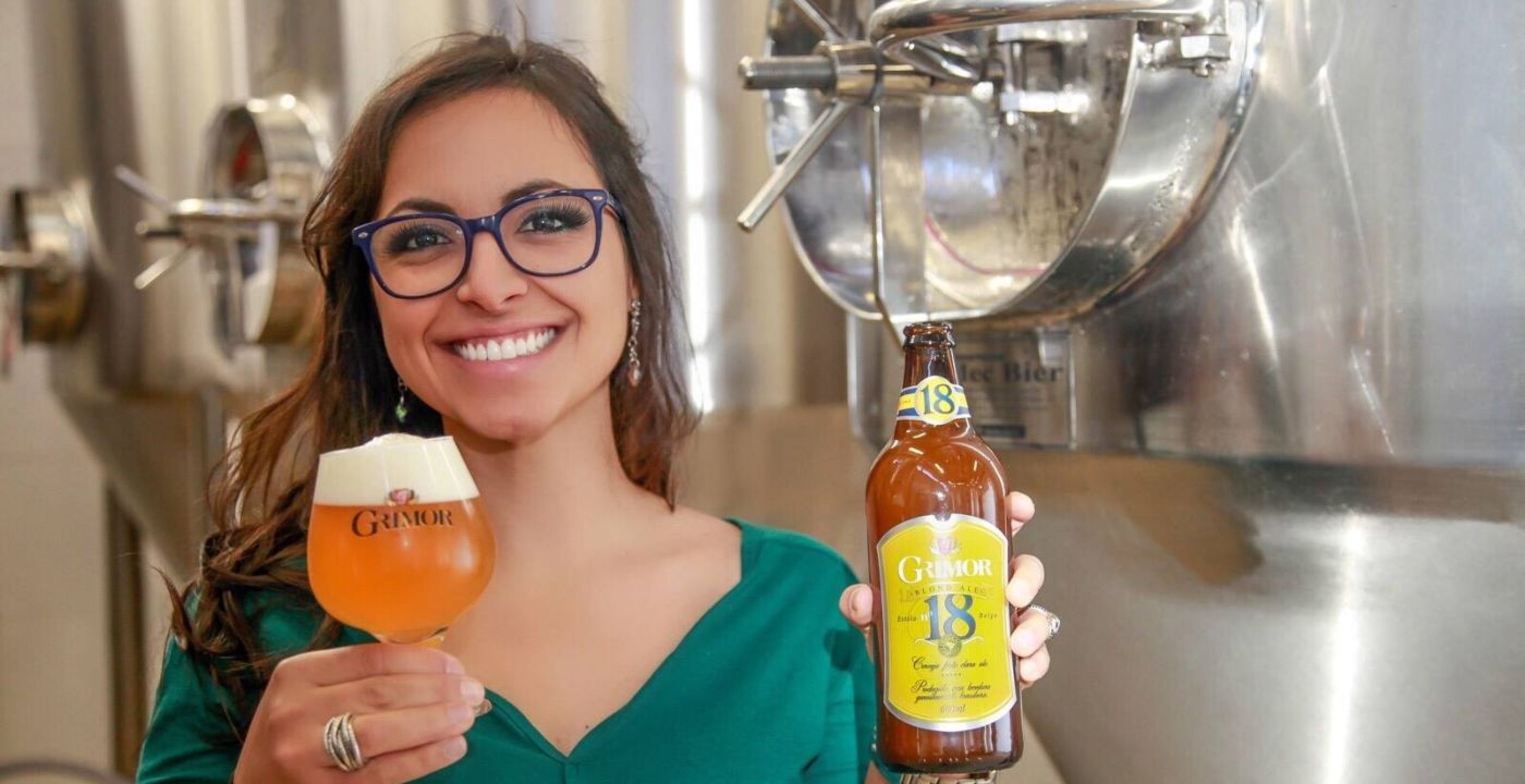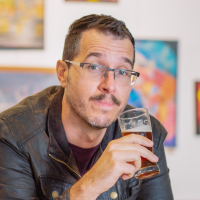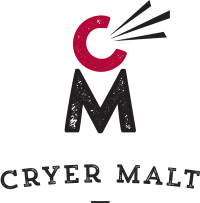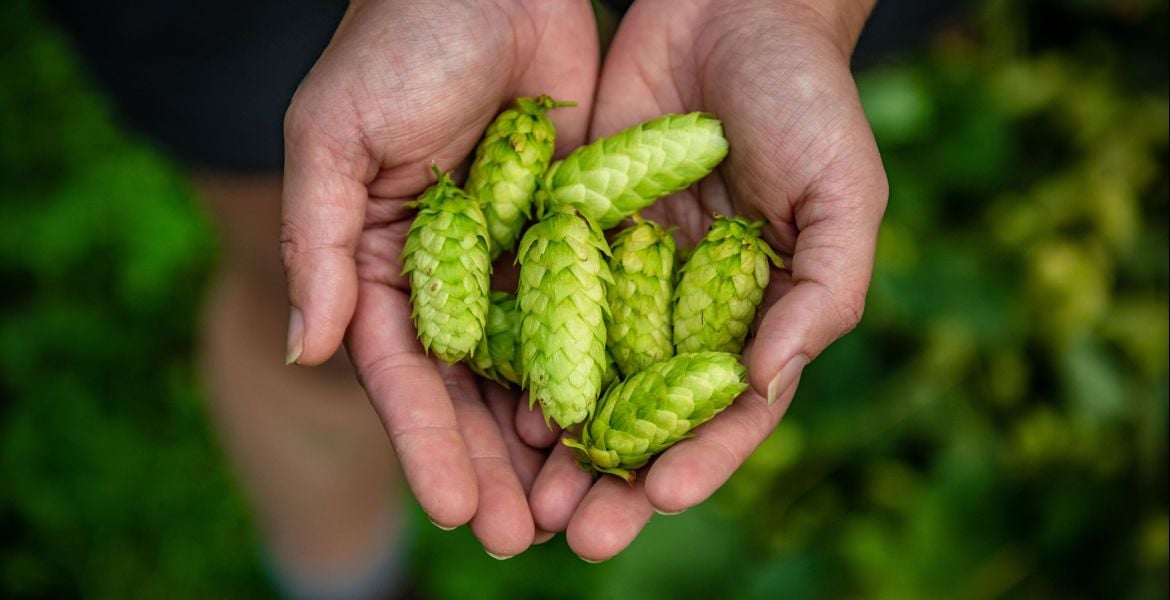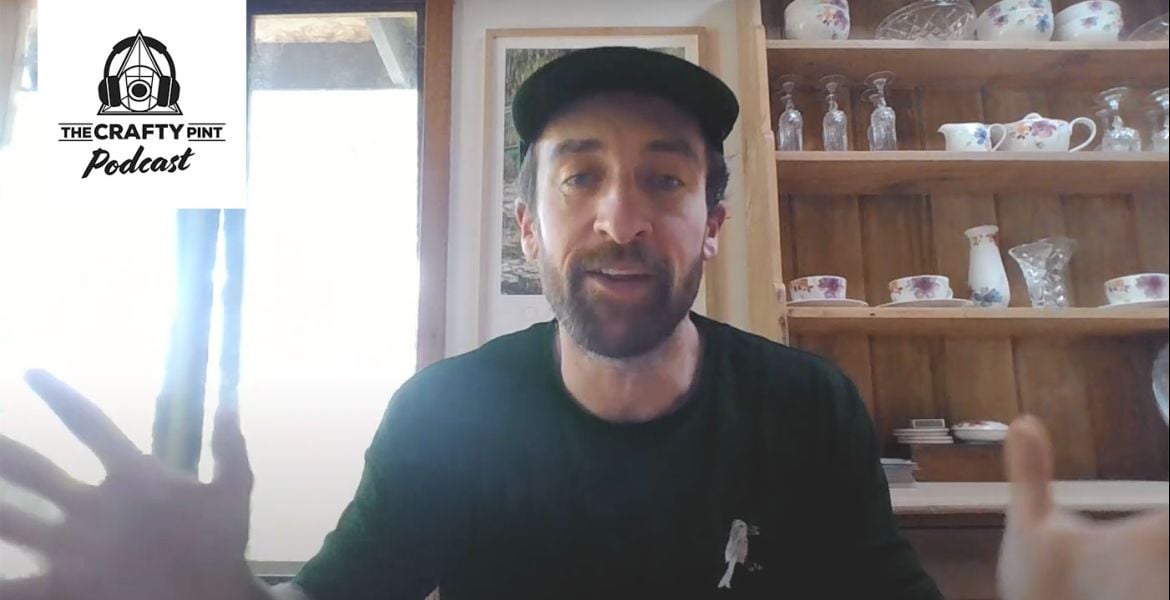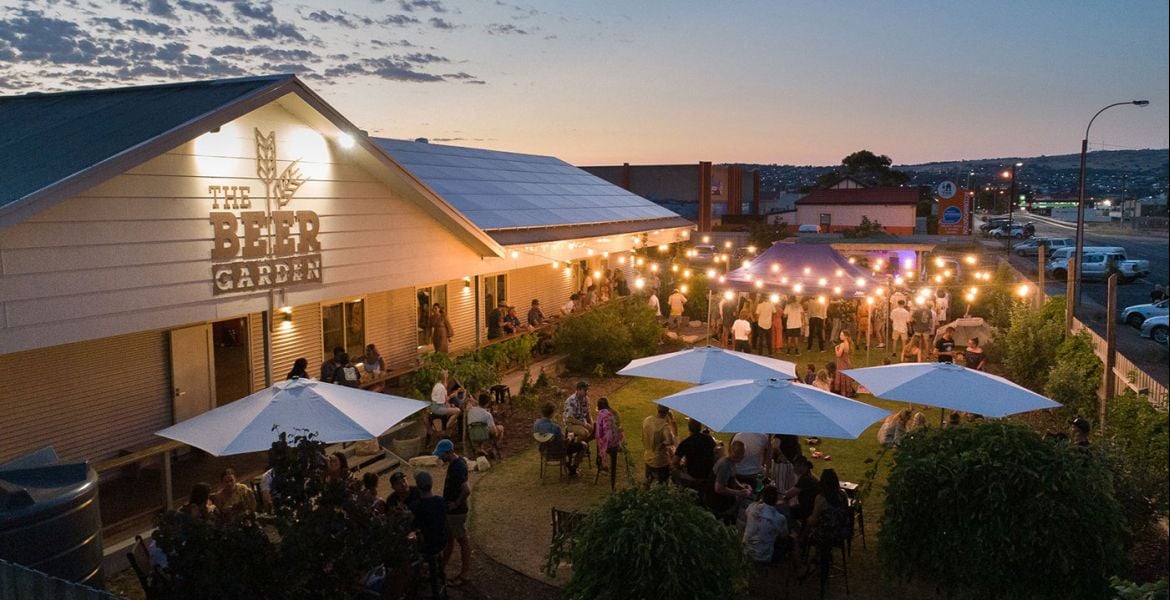I’m sure more than one person has said to Gabriela Montandon: “So, you get paid to taste beer? Gee, I should do your job!”
After all, Gabriela – Dr Gabriela, actually – introduces herself as “head of sensory at Fermentis”. And since Fermentis is a company that makes yeast for beer, then the sensory department is all about tasting beer, right?
Well… yes. But there’s a little more to it than that.
“Sensory is a very fine science,” she says. “It’s not because we have a nose and a mouth that we are able to do sensory analysis. It’s something else. We are able to taste, or we are able to drink, even – but sensory analysis is another topic.”
Tasting beer is key to sensory analysis in the same way that stacking one brick on top of another is key to building a house. Yes, it’s an essential part of the task… and, at the same time, it’s a tiny aspect that doesn’t capture the enormity and complexity of the task.
Gabriela works at the Fermentis Campus in France, where her full job title is “Sensory Analysis Manager”. While she has more than 15 years’ experience as a professional taster, that’s not actually her job here. The bulk of her job is managing research projects, where her team works to understand more about Fermentis’ yeast strains.
She runs experiments to see how yeasts respond in different fermentation conditions, how they react with other beer ingredients, and looks for new and exciting ways yeasts can be used and manipulated to create different flavour profiles.

For each of her projects, the way to understand the yeast is to ferment it in beer. Fermentis has a state-of-the-art experimental brewery where a single batch of beer is regularly split and fermented in different conditions and with different yeast strains. It’s custom built for the task: there are more 50 fermentation vessels including a couple of open fermenters, as well as a bunch of barrels. I don’t envy whoever does the cleaning.
It’s here that Gabriela’s research ends up in multiple beer samples, which then go off for different kinds of analysis. Some go to the microbiology lab, some to the physicochemical lab, some to an offsite lab for deeper analysis. But it’s one thing to look at yeast under a microscope, or determine how many parts per million of esters are in a beer. It’s another thing to have a tasting panel tell you they taste overripe banana strongly in this beer, but not in that beer.
To study the real life flavour impact of yeast on beer, Gabriela needs to send beer samples through sensory analysis.
You could say sensory analysis is just the final step of these research projects – “the cherry of the cake”, as Gabriela calls it. Or you could say the whole point of the research is to lead to sensory. Either way, all those beers brewed for all those experiments end up in Fermentis’ sensory lab.
The sensory lab has a sci-fi feel to it. It’s lined with white booths that rise and descend on their own, just begging for the theme music from 2001: A Space Odyssey to be played. There are trays of black beer glasses, with lids to keep the aromatics in. Trained tasting panellists sniff and sip beer samples over a series of weeks, and input their data into electronic tablets. Sensory experts project multi-coloured graphs onto the wall showing the results of their experiments on a particular yeast.

A lot of beer gets tasted in this room. But it’s very different from sipping a tasting paddle at a brewery.
“This is sensory analysis, which is mostly based on analysing data from humans,” Gabriela says. “Making subjective to objective – true statistics.”
We often talk about taste as being subjective. So how do Gabriela and her team gather objective data for science experiments? By treating it just as you’d treat any other science experiment.
First, every experiment needs a specific research question. For the sake of our conversation, Gabriela and I designed a hypothetical experiment: how she’d test which of Fermentis’ yeast strains would produce a good hefeweizen, and under what conditions. She talks through how she’d come up with a standard recipe, how she’d choose which yeast strains to test (“I will not test neutral, phenolic negative yeast; that’s not the target, this is out of the scope”), and what parameters she’d change for the different samples (“We will not change here densities and bitterness, but we will change fermentation temperature and we will change pitching rate”).
Next, you need to define and control your variables. The sensory lab is designed to be a neutral environment; it's entirely white so as to limit distractions, and the 17 booths ensure the panellists aren’t influenced by seeing each other during tasting, although they can be lowered when it’s time for discussion.
The six beer samples are the variables being measured: the hefeweizens fermented with different yeasts strains, and at different temperatures and pitching rates. So that the tasters can’t tell the difference between them by sight, they’re served in black beer glasses. To keep the tasters as unbiased as possible, they won’t be told what they’re tasting or why, and the samples will be served in a randomised order each time.
The beers are all served at the same temperature, the room is temperature controlled, and the sensory session is kept short to minimise how much the beers themselves change during the session.
Now you need a test group. In this case, that’s a tasting panel. Because while Gabriella’s been a professional beer taster for more than 15 years, and she could detect and describe more aromas and flavours than most, she’s still just one person.

“You have professional opinion, but you have also a sensory panel which have different levels of sensibility. They have different genders, they have different age as well. So it’s more consistent. Is it detailed as a professional taster can be? No. It’s another approach.”
For beer sensory analysis, Gabriela has access to around 60 tasters who come in to taste on a weekly basis to stay sharp. They make up three tasting panels. The two larger groups are sourced from around LeSaffre, with one trained especially in fermentative flavours, while the other is trained more generally with other raw materials (including malt and hops). The third and smallest group is an expert panel made up of 13 people in Fermentis to work with confidential R&D projects.
Before this part of the experiment, it’s been easy to control variables and keep things objective. Now that we’ve reached our human element – and multiple humans, at that – Gabriela has her work cut out. Even with trained tasters, there are always differences in what people taste and describe, and Gabriela isn’t here to gather a range of opinions; she’s looking for consistent patterns in the data.
“This is sensory analysis, which is different from tasting. Tasting you go and you take all that opinion that is one against the other, and you don’t care – it’s just like that. In sensory analysis, we make sure this is a stable data.”
A well-run experiment is all about stringent process, and that’s exactly how sensory analysis gets objective data from subjective humans. Once Gabriela’s chosen the panel best suited for a particular experiment, she’ll bring that group in to taste the samples once or twice a week for about six weeks. This time is divided into three stages: discovery, training, and evaluation.
The first two sessions are called discovery. Here the panellists get their first contact with the samples, and get to explore and discuss what they’re tasting. Remember, they haven’t been told what they’re given.
“[The samples] will be coded, nobody has no idea. They won’t know either it’s a hef,” Gabriela says. “They have no idea. I cannot ask anything yet.”

Gabriela says these first two sessions are about “understanding the product universe”. There may be unfamiliar flavours in the samples; for all Gabriela knows, some of the panellists may have never tasted a hefeweizen before, and may need a couple of sessions to get their head around it.
“They will say, ‘I smell banana, I smell some apple, here I smell overripe bananas…. Here I smell spice, here I smell less spice.’ There will be very messy things coming out of this discovery of the samples.
“The next step we’ll do is we say, ‘Let's organise this mess.’”
After discovery comes training. For four or five weeks, the panel comes back for multiple sensory sessions, tasting the same samples but with the order randomised each time. During this time, Gabriela can ask them questions – which sample is fruitier, which is spicier – and can begin to see if they are reliably picking up flavours for each sample that they picked up in previous sessions. And where there’s discrepancy, she can start assessing the tasters to understand what’s going on.
“You say banana, these guys said overripe banana, and this one said green banana. How we will make sure this is real different things, or is just the same thing that we are perceiving or describing different?”
The way Gabriela checks what each person is tasting, and the language they’re using to describe it, is to blind test the panellists on flavour references. This can be the actual product – for example, an overripe banana – or a flavour compound they’ve developed at Fermentis.
“We will have different banana references that we bring to you. We are approaching I think more than 200 recipes that we do in our lab, that we generate those references for you. And we will test you. We want to see if consistently you are finding whatever you want to call ‘overripened banana’ in the same glass.”

Finally, after five or six weeks, it’s time for the big day: evaluation. This is where Gabriela actually collects the data for the final sensory analysis. You could think of everything before this as practice, and this as the real thing.
Each panellist sits in their individual booths with a tablet to input their data into the sensory software. A slot opens up and in slides a tray; it’s like they’re in solitary confinement. But instead of gruel and stale bread, they receive their six black beer glasses with the lids on – in randomised order, of course. By this point, the panellists should be reliable tasters of these six hefeweizens, and can notice what aromas and flavours are present, and at what intensity.
“It’s objective measurement. We ask them to identify a flavour, but also quantify most of the time,” Gabriela says. “Poetry is out. The beauty is out. There’s no poetry. We want to have words that exemplify the best what the majority of people are feeling, and that they feel it several ways.”
As any scientist knows, the best experiments are repeatable. The results you get once could be a fluke. But if you can do the same experiment twice and get the same results, you can trust those results. And so Gabriela conducts evaluation twice in the same day.
“I want to make sure they do it twice to get that repeatability we mentioned. If you say one advice today and tomorrow it’s another, I say to you, ‘The panel is not good. We need to do this still more.’”
This is where we come back to the difficulty of the human element in sensory analysis. In science experiments, you need to check that your equipment is working the way it should so you can rely on the data it gives you. But in these experiments the data is coming from humans.
“With people, it’s very difficult, because it’s different to equipment,” she says. “If you, for instance, have a thermometer that you put in a boiling water and it gives you 50, you know it’s wrong. But people, you don’t know.”

She explains further: “We need to prove it’s not the variance of the panel, or the people. I don’t want to tell you I measured three times – one say it’s 50 degree, another is 100, and another is 20. And then we will consider there is something wrong with the thermometer. So we want to make sure this is constant.”
The way Gabriela and her team check their “equipment” for consistency is to focus on three criteria in the tasting panels: that they’re consensual, discriminant, and repeatable.
“Consensual” means reaching a consensus across the panel, rather than just giving a range of subjective opinions.
“Your opinion alone is not important for us, ‘cause opinion is opinion… I need to make sure this is consensual, that the panel give one opinion.”
This doesn’t happen automatically; even beer judges at international competitions can struggle to reach consensus. When the tasters give differing feedback, Gabriela’s team can find where the discrepancy lies by re-testing the ability of the individuals involved, often by using the flavour references mentioned earlier. Sometimes one of the individuals will prove to be using language differently, and everything gets cleared up. Sometimes one will prove to be unreliable with a particular flavour. Or sometimes, they simply have to find the patterns of where they do agree.
“At first moment, one said green [banana], and another said overripe… I want to make sure you are in agreement with your colleague that you are OK to call banana. And he will also call banana.”

“Discriminant” means being able to taste the differences between different flavours and different intensities of flavour.
“I want that you find that here you have banana, and there you don’t have banana. If everything has banana, banana is not important as a character.”
Since the whole point of the experiments is to compare samples, it doesn’t really matter if all six samples have, for example, equal levels of bitterness. But it’s important for tasters to pick up where there are differences between them.
“Repeatable”, as mentioned before, is the ability to deliver the same results again and again.
“[I need to see] that you do this consistently, in the same product in different days. And that you are repeating it. So it’s not a matter of the order of the sample, or the day that you wake up more sensitive to this.”
Now you’ve come to the last stage of the science experiment: processing the data.
Gabriela ends up with all the results of the weeks-long sensory analysis, alongside the other forms of analysis, and has to sort through and interpret it all.
“I understand which raw materials we are using, the process we are using, the conditionings of the packaging, storage of the beer, analyse and everything, to try to understand why we are having that sensory outcome.”
Then she can present comprehensive reports to others in Fermentis, and provide information to brewers to give them a better understanding of yeast and fermentation.
But that’s data analysis, not sensory analysis, so we’ll leave that for another day.

See what I mean about sensory analysis being more than just tasting beer?
The panellists don’t have an easy job. When I was asking about the design of the sensory lab, Gabriela said the reason for the full-length windows was to help them not feel like rats in a cage when they’re inside their little booths during evaluation.
“It can be very tough, I tell you, to do beer evaluation in a cage for one hour, to put in numbers. It’s very tough. It’s not pleasant. Super mental draining and tiring.”
As for Gabriela’s job? We’ve just tracked through one part of one experiment. She manages experiments for all different research projects, exploring combinations of yeast strains, fermentation conditions, raw ingredients, and beer styles. For each one, she’s doing experiment design and lab work, then she’s sending the samples through sensory with the tasting panel, then she’s got the data to process…
“Head of sensory at Fermentis? So, you get paid to taste beer? Gee, I should do your job!”
It’s a tough job. But someone’s got to do it.
If you're reading this in time, the Fermentis Academy Roadshow 2024 touches down in Melbourne on October 9 and Brisbane on October 11.
In the second episode of The Crafty Pint Podcast, we spoke to sensory and quality guru Lindsay Astarita - watch or listen here.





